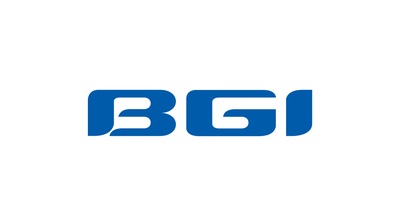Press Release
Lacework Code Security Extends Platform's Coverage to the Full Application Lifecycle

[ad_1]
Lacework unifies code and cloud security so enterprises can innovate and deliver secure cloud-native applications faster than ever
MOUNTAIN VIEW, Calif., Nov. 14, 2023 /PRNewswire/ — Lacework, the data-driven cloud security company, today announced its release of code security, which provides Lacework customers full visibility throughout the complete application development lifecycle. Lacework code security helps prevent security issues from getting into the wild by identifying them before code is deployed, and helps prioritize and fix issues faster, wherever they are found in the application lifecycle.

Lacework has always believed that achieving the best security outcomes, with speed, requires continuous visibility and context, including knowing where every software package is running, and the ability to capture and correlate data across the application lifecycle. This approach empowers security teams to be more efficient, eliminates the toil of stitching together data and findings from different sources, and it helps to consolidate onto fewer tools that deliver higher value.
“This is a milestone moment as we unveil our data-driven approach to code security, purpose-built to complement the greater Lacework platform” said Jay Parikh, CEO, Lacework. “Our deep investment into the technology that powers the Lacework platform allows us to provide customers with much more than code security insights. Lacework is able to combine various sources of data to help provide deep security insights that span from code to cloud.”
Introducing Lacework Software Composition Analysis (SCA) and Static Application Security Testing (SAST)
Lacework is introducing two forms of static program analysis – one (SCA) targeted at third-party code in customers’ repositories, and the other (SAST) targeted at first-party code.
The SCA capabilities developed by Lacework give customers continuous visibility into third-party software libraries and associated vulnerabilities, including direct and indirect dependencies. The unique approach taken by Lacework goes beyond basic SCA functionality and gives teams continuous visibility into exactly where vulnerable functions are used in the code, how often each is referenced, who was responsible for bringing it in, and who owns fixing the code. Customers gain an always-up-to date software bill of materials (SBOMs) for every application and continual visibility into their software supply chain, as well as an understanding of open-source license risk.
For the first time, with SCA as part of the Lacework platform, customers have visibility of a vulnerable package’s full lifecycle, tracking its usage in the source code to its activity within any cloud-native workload. The active vulnerability detection is accomplished using an extension of the Lacework runtime agent known as Code Aware Agent (CAA). Previously, Lacework announced Active Vulnerability Detection (AVD) for host packages, and today the company has added AVD support for containers, meaning customers can now identify runtime package activity across broad surfaces of cloud workloads.
“When we developed CAA we did so with the aim of connecting to static analysis,” said Peter O’Hearn, Director of Engineering, Lacework. “There is a huge unexplored potential in combining static and runtime analysis, with previously-unrealized value that we are now beginning to tap into.”
The combination of AVD and SCA illustrates the benefit of a platform approach to cloud security. If a package is known to be active, then updating it might be prioritized over packages that have not been found to be active and perhaps never will be. Conversely, if a package is inactive it might be considered a candidate for removal, thus reducing the attack surface. AVD furnishes the runtime insight, and SCA the source code information that can lead to faster resolution.
“With Lacework code security, we will achieve a new level of maturity and empower our teams to innovate faster,” said John Sinteur, Security Architect at Mendix. “This comprehensive visibility into third party code will help us to demonstrate to our customers that their low code apps and our platform are free from third party vulnerabilities. Along with these capabilities, the Lacework agent helps us prioritize vulnerabilities in terms of risk by tracking package activity.”
Lacework SAST complements SCA to provide comprehensive code security capabilities to help organizations understand how first-party code could be exploited. Lacework SAST takes in-house code and identifies source-code weaknesses that an attacker could exploit to bypass security controls, run malicious commands, or exfiltrate sensitive data. From that analysis, the tool provides customers with an automated and intuitive secure code review that’s easily actionable by both entry-level and senior security analysts.
Lacework SAST gives application security engineers visibility into complex vulnerabilities within their most exposed internet-facing applications. Lacework provides an in-depth model of each application and tracks the path of untrusted data to weed out zero-days that could result in dangerous exploits like SQL injection. Application security teams can scale to meet the demands of much larger development teams with a fast analyzer that can assess millions of lines of code in minutes.
Traditional SAST tools are notorious for noisy results with a large number of false positives. What is less often emphasized, but even more crucial to security posture, are false negatives (missed bugs). Lacework SAST uses a sophisticated set of techniques to analyze call chains and control paths of an application. This analysis learns when a developer has added compensating controls to mitigate risk, and Lacework’s highly-configurable engine allows security engineers to easily customize and add rules to meet the specific needs of their unique codebase. Lacework SAST analysis is both precise and fast: it has low false positives and negatives.
The code security capabilities Lacework announced today build on its previous investment in infrastructure as code (IaC) security and further deliver on the company’s vision for a data-driven platform that covers the entire application lifecycle. A single platform spanning from code all the way to production gives security teams unmatched visibility, paves the way for further tool consolidation, all while enabling faster innovation and better security outcomes.
To learn more, visit Lacework.com and the below resources.
Further Resources:
- Read more about Lacework code security
- Download the Lacework code security solution brief
- Watch a Lacework code security demo
- Try Lacework today with a 14-day free trial
About Lacework
Lacework keeps organizations secure in the cloud, allowing them to innovate faster with confidence. Cloud security requires a fundamentally new approach and the Lacework platform is designed to scale with the volume, variety, and velocity of cloud data across an organization’s cloud environment: code, identities, containers, and multi-cloud infrastructure. Only Lacework provides Security and Development teams with a correlated and prioritized end-to-end view that pinpoints the largest risks and handful of security events that matter most. Learn more at www.lacework.com.
Media Contacts:
Mark Wheeler
Vice President, Corporate Marketing
Lacework
[email protected]
Logo – https://mma.prnewswire.com/media/1865984/Lacework_Logo.jpg
![]() View original content:https://www.prnewswire.co.uk/news-releases/lacework-code-security-extends-platforms-coverage-to-the-full-application-lifecycle-301986900.html
View original content:https://www.prnewswire.co.uk/news-releases/lacework-code-security-extends-platforms-coverage-to-the-full-application-lifecycle-301986900.html

[ad_2]
Source link
Press Release
New Study Reveals Majority of Indians Prioritize Nutrition Over Taste, Surpassing Global Average

[ad_1]
Based on a recent survey of urban Indian consumers:
-
Nine out of 10 consumers are searching for protein-rich food compared to seven out of 10 global shoppers. -
The top four qualities consumers look for when buying snacks are (1) natural, (2) heart-healthy, (3) protein-rich and (4) energy-source, all of which come before satisfying cravings. -
Nuts have emerged as one of the most popular snacking choices, with 86% of Indian shoppers report having purchased them in a span of 6 months. -
Urban Indians read nutrition labels more than the global average, reflecting a growing trend towards informed purchasing. -
69% of urban dwellers surveyed have the opinion that plant-based protein is just as good as meat-based protein, exceeding the global average of 55%.
Wonderful Pistachios, the world’s largest grower and processor of pistachios and distributor of California Pistachios in India, released today, World Nutrition Day, the findings of a new global study that sheds light on the snacking habits of urban Indians. The study, commissioned with Material, a leading global research consultancy, included 10 countries and over 12,400 respondents, revealed a new behavioural trend that urban Indian consumers prioritize nutrition over taste when it comes to snacking. This growing preference for healthy snacking emphasizes the importance of good nutrition for overall well-being.
For the India market specifically, the study delved into the snacking habits of 2,415 shoppers across six Indian cities, which represented a population of approximately 35.9 million consumers. Remarkably, a majority of urban Indians (58%) reported basing their food purchasing decisions on nutritional benefits more than taste, exceeding the global average of 52%. Delhi and Ahmedabad lead with over 60% of urban shoppers preferring nutrition in their food. Bengaluru and Chennai follow closely, indicating a nationwide shift towards smarter snacking preferences. In India, Millennials and Gen Z are leading the charge in health-conscious purchasing decisions, with more than 83% of consumers in these age groups reading nutritional labels before buying.
Indian consumers prioritize four key factors when shopping for nutritional snacks: natural (free of artificial colours and preservatives), heart-healthy, protein-rich, and provides energy. Nine out of 10 urban shoppers consciously seek protein-rich food options, compared to the global average of seven out of 10. The focus on nutrition has fueled the rise of nuts as a preferred snack choice, becoming essential to daily eating habits. The study found a staggering consumption of nuts, with 86% of Indian shoppers report purchasing them in a span of 6 months, compared to just 75% globally. With 6g of protein in per 28g serving, California Pistachios are a smart snack choice that provides benefits without sacrificing taste.
Shail Pancholi, Country Director, India, Wonderful Pistachios, commented on the study, saying, “Nuts were traditionally used as garnishes and consumed during festivals, but have now become a popular snack in India, indicating a notable shift in dietary habits. Pistachio consumption in India has doubled in the last six years, as consumer awareness of the nutritional benefits that pistachios offer has grown. Consumers are discovering that pistachios are naturally cholesterol-free, rich in plant-based protein and dietary fiber, and provide over 30 different vitamins and minerals.”
Interestingly, the study found that nuts are the second most preferred snack among urban Indian consumers, with 64% of Baby Boomers and 59% of Gen Z prioritizing nutrition over taste when selecting food. This indicates a growing focus on health across generations, with Baby Boomers focusing on senior wellness and Gen Z reflecting the rise of mindful purchasing. Though on opposite ends of the age spectrum, these two generations take the lead in seeking protein-rich options, as well as preferring natural snacks.
Mumbai tops most of the consideration sets when choosing a snack. Residents opt for natural ingredients (35% vs. the national average of 30%), heart-healthy options (33% vs. 30%), and protein (33% vs. 29%). Chennai residents look for energy-boosting snacks (31% vs. the national average of 29%).
The fact that 69% of urban Indians surveyed have the opinion that that plant-based protein is just as good as meat-based protein reflects a positive shift towards varied dietary preferences. Pistachios are a good source of high-quality complete protein, containing all nine essential amino acids. A 28g serving of pistachios provides 6g of protein, which is 11% of the recommended daily allowance (RDA) according to FSSAI.
The Wonderful Pistachios study unveils a compelling shift in Indian snacking habits. Nuts are evolving from festive treats to a daily snacking staple, fueled by a nationwide preference for more nutritious options. The trend transcends generations, resonating with Gen Z and Baby Boomers alike, underscoring the growing importance of mindful eating in urban India. As consumers increasingly seek natural, heart-healthy, protein-rich, and energy-boosting snacks, the future of Indian snacking appears to be firmly rooted in nutrition and well-being.
Wonderful Pistachios
Wonderful® Pistachios is the world’s largest grower and processor of pistachios, with a global presence in over 70 countries. As a vertically integrated operation, they are experts in every step of the process from tree to shelf, ensuring the highest-quality product every time. In tandem with its Grower Partners, Wonderful Pistachios harvests 125,000 sunny acres (50,000 hectares) of land in California that receive warm days and cool nights, which work in harmony with the rich, natural soils to create the perfect growing climate for high-quality pistachios. They ship 600 million pounds (204 million kg) of nuts worldwide from their advanced processing facilities to ensure the highest standards are met. When it comes to pistachios, Wonderful® Pistachios expertise is unmatched in scale and capacity, paired with warehouses and sales teams worldwide that are well-equipped to provide support at every step of the way.
California Pistachios
California Pistachios are grown and distributed by The Wonderful Company, the world’s largest vertically integrated pistachio processor and marketer located in California’s Central Valley. California Pistachios are Non-GMO, providing a smart, healthy choice for consumers around the world. Sun-ripened in the moderate Mediterranean climate of California, these distinctively green nuts pack taste and contain antioxidants and over 30 different nutrients. California Pistachios in India are available under leading brands and private labels at retail outlets, grocery stores, and online platforms.
For more information about California Pistachios India, please visit www.b2b.wonderfulpistachios.com
[ad_2]
Source link
Press Release
Singapore Prepares Ahead to Leverage Artificial Intelligence for a Better Future

[ad_1]
SINGAPORE, May 31, 2024 /PRNewswire/ — Senior Minister of State for Communications and Information Tan Kiat How launched the Digital Enterprise Blueprint (DEB) at Asia Tech x Singapore (ATxSG) 2024 today. The Blueprint will enable SMEs to harness technology, optimise the way they work, and strengthen digital resilience and cybersecurity across the ecosystem. 50,000 SMEs are expected to benefit over the next five years through four key focus areas:
- Empower enterprises to be smarter by adopting AI-enabled solutions
- Enable enterprises to scale faster through cloud-based and integrated solutions
- Equip enterprises to be safer through improved cyber resilience
- Support enterprises to upskill workers to make full use of digital capabilities
Seven partners have come onboard to pledge their commitment, including Singapore Business Federation, Singapore Computer Society, SGTech, Amazon Web Services, Google, Microsoft and Salesforce.
In collaboration with IMDA and the TechSkills Accelerator for ITE and Polytechnics Alliance, SGTech is launching the Tech Apprenticeship Programme to expand the career pathways of graduates by providing access to industry apprenticeships that offer on-the-job training and development opportunities. Over the next two and a half years, SGTech aims to facilitate the placement of at least 300 apprentices who are fresh or mid-career professionals from polytechnic or ITE backgrounds, and drive the adoption of similar practices that promote more inclusive hiring and career agility.
IMDA and the Singapore Academy of Law (SAL) signed an MoU aimed at uplifting the legal sector’s productivity through the use of GenAI. As part of this partnership, GPT-Legal, a new large language model which is contextualised for Singapore’s legal sector, will be co-developed. The model will be integrated into SAL’s research platform LawNet, which is accessible by 75% of Singapore’s lawyers. SAL will also be penning an MoU with the National University of Singapore and AI Singapore to develop its AI capabilities and create a certification to recognise AI specialists in the legal profession.
Additionally, Tribe and Digital Industry Singapore announced a collaboration with NVIDIA to launch the Ignition AI Accelerator for AI startups to create and bring to market the next wave of advancement in AI solutions. This programme will nurture 15 high-potential startups, equipping them with well-rounded support covering business and technical needs. NVIDIA and Tribe will also collaborate with EnterpriseSG to offer qualified AI startups funding support through the Startup SG Tech scheme, and assist them through the IMDA Accreditation process.
Singapore hosted the final meeting of the UN Secretary-General’s Artificial Intelligence Advisory Body (AIAB) from 28-29 May. As part of the agenda, Singapore facilitated an engagement session between AIAB and the Digital Forum of Small States (Digital FOSS). Digital FOSS Fellows exchanged views with AIAB members on the topic of AI governance, particularly on the implications and challenges faced by small states. Through such efforts, Singapore aims to promote a more inclusive approach towards shaping global AI and digital governance.
Contact:
[email protected]
![]() View original content to download multimedia:https://www.prnewswire.com/in/news-releases/singapore-prepares-ahead-to-leverage-artificial-intelligence-for-a-better-future-302160193.html
View original content to download multimedia:https://www.prnewswire.com/in/news-releases/singapore-prepares-ahead-to-leverage-artificial-intelligence-for-a-better-future-302160193.html

[ad_2]
Source link
Press Release
One in Six Globally Concerned About Colorectal Cancer Screening Costs

[ad_1]
SHENZHEN, China, May 31, 2024 /PRNewswire/ — By 2040, the burden of colorectal cancer (CRC) is projected to increase to 3.2 million new cases and 1.6 million deaths per year representing a 66% and 71% rise in new cases and deaths respectively relative to 2020.

To better address the global burden of CRC and reduce its impact, BGI Genomics has launched the second edition of its global CRC awareness report, covering 1,938 respondents from Brazil (306), China (367), Poland (300), Saudi Arabia (300), Thailand (362), and Uruguay (303):
CRC Screening Gaps Vary Globally: Nearly half (49.3%) of global respondents have never undergone CRC screening, with the highest proportions in Saudi Arabia (62.0%) and Poland (61.0%).
Preference for Fecal Testing Over Colonoscopy: Although colonoscopies are more recognized (33.4%), fecal tests at healthcare facilities are preferred (31.8%), reflecting a trend towards non-invasive methods.
Cost and Fear are Determinants of Screening Choice: Fear of colonoscopy (18.2%) and screening costs (17.7%) are major barriers to CRC screening. Poland (24.7%) and Uruguay (21.0%) show the highest fear of colonoscopy, while Thailand (24.5%) and Brazil (20%) indicate the most concern about costs.
Medical Advice and Family History Drive CRC Screening: Doctor’s recommendations are a major driver for CRC screening (30.5% globally), with Uruguay showing the highest adherence (44.1%). Additionally, those with a family history of CRC are more proactive in screening (64.5%), compared to the general population (35.0%).
Prof. Varut Lohsiriwat from Mahidol University offers his insights to this report. He suggested: “The essence of effective cancer screening lies in the acceptance and adherence of the patient to the screening method. The best screening method is the one that the patient accepts and adheres to because that’s the method that will actually benefit them.”
Dr. Zhu Shida, BGI Genomics Deputy GM, notes: “At BGI Genomics, we focused our efforts on developing advanced molecular biology testing techniques to close the gap [between acceptance and accessibility]. The ultimate goal is to transform colorectal cancer from a life-threatening disease into a manageable condition through widespread, early screening and intervention.”
For more region-level comparisons, access the full BGI Genomics 2024 State of CRC Awareness Report.
All data involved in this report come from the results of an online survey project conducted by BGI Genomics. It only surveys awareness related to colorectal cancer and does not involve personally identifiable data.
Logo – https://mma.prnewswire.com/media/1608027/BGI_Logo.jpg
![]() View original content:https://www.prnewswire.co.uk/news-releases/one-in-six-globally-concerned-about-colorectal-cancer-screening-costs-302159170.html
View original content:https://www.prnewswire.co.uk/news-releases/one-in-six-globally-concerned-about-colorectal-cancer-screening-costs-302159170.html

[ad_2]
Source link

 Fashion8 years ago
Fashion8 years agoThese ’90s fashion trends are making a comeback in 2017

 Entertainment8 years ago
Entertainment8 years agoThe final 6 ‘Game of Thrones’ episodes might feel like a full season

 Fashion8 years ago
Fashion8 years agoAccording to Dior Couture, this taboo fashion accessory is back

 Entertainment8 years ago
Entertainment8 years agoThe old and New Edition cast comes together to perform

 Sports8 years ago
Sports8 years agoPhillies’ Aaron Altherr makes mind-boggling barehanded play

 Press Release8 years ago
Press Release8 years agoUber and Lyft are finally available in all of New York State

 Sports8 years ago
Sports8 years agoSteph Curry finally got the contract he deserves from the Warriors

 Entertainment8 years ago
Entertainment8 years agoDisney’s live-action Aladdin finally finds its stars





